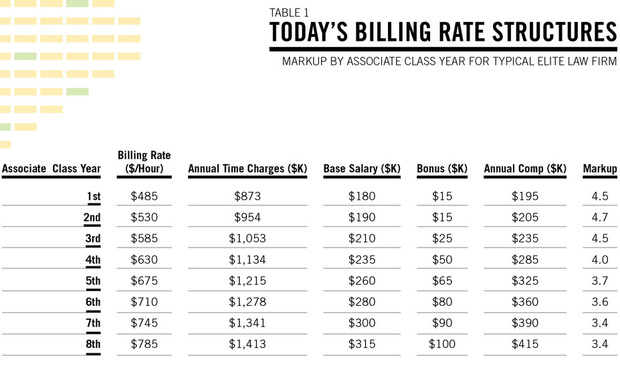Setting the next year’s billing rates follows a simple formula at most firms: last year’s rate plus a common percentage increase across all lawyer cohorts. A more disaggregated approach is needed. Specifically, firms should set higher percentage increases for senior lawyers and lower increases for junior lawyers. Why? Because, over the next 10 years, hours leverage (i.e., the number of associate hours per partner hour) at elite law firms will decline as more of the lower value-added work is handled not by junior lawyers but by enhanced technologies, in-house counsel, and alternative service providers. To maintain profitability, the margin that was earned on the displaced junior lawyer time has to be recouped through higher margin on senior lawyer time. Failure to increase senior billing rates differentially, and thus to rebalance the source of margin from junior to senior lawyer time, will result in a calamitous decline in profitability. It can be avoided if firms start now to gradually change their billing rate structures.
Today’s Billing Rate Structures
Law firm billing rates are perverse. Normally a business charges a higher markup on a higher value product—for example, jewelry sells for twice its cost while milk sells for a few percent above its cost. Not so in law: most firms charge out their junior associates at a higher markup of their cost than they do their senior associates. Table 1 shows the numbers: the billing rates are those for a typical elite firm and are translated to equivalent annual time charges assuming 1,800 billed hours per attorney; the associate base and bonus compensation follow last-year’s Cravath scale. The “markup” is the number of times annual time charges exceed annual compensation. As the data show, the markup declines from about 4.5 times in the junior cohorts to 3.4 times in the senior cohorts, a sharp contrast and the opposite of the pattern one would expect.







